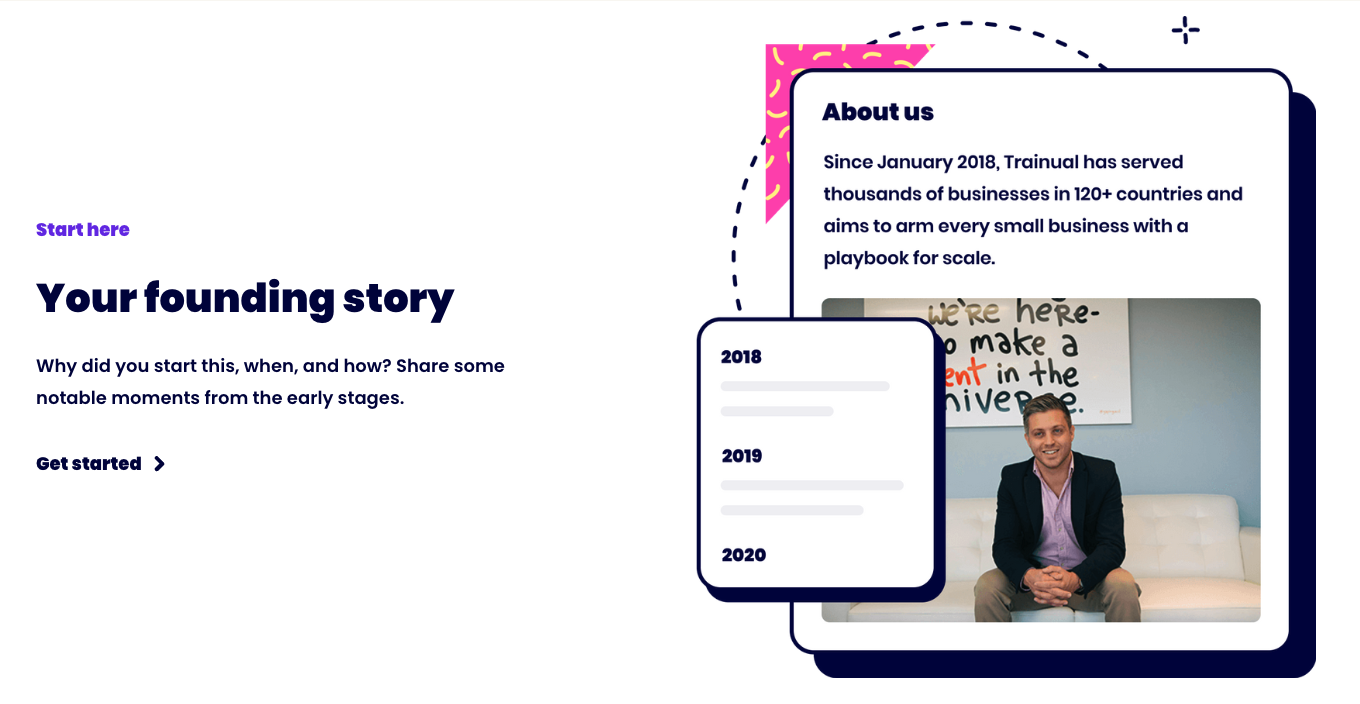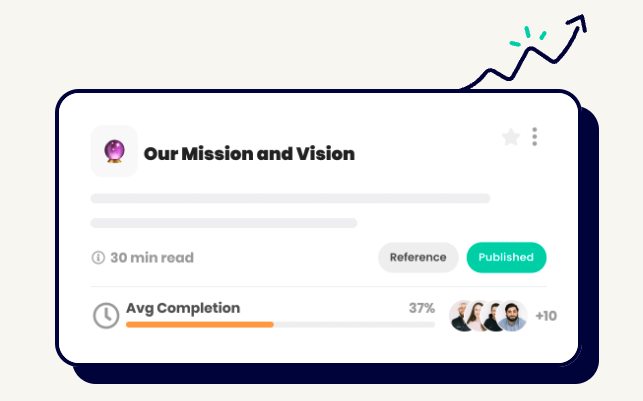
Articles
First Impressions Matter: Here’s How to Get Your SMB’s Orientation Right
May 19, 2022

New employee orientation doesn’t have to be all about paperwork. Instead, think of it as an opportunity to bring your new team members up to speed on your business practices and set them up for success, while also welcoming them into your company culture.
Many of us may remember our first day at a new job. The jitters and the endless “what ifs,” not knowing who to direct questions to, or if we’ll ever wrap our head around all the new processes.
While you can’t go back in time and change those experiences, you can commit to making orientation rewarding for your own employees. Creating an all-around positive orientation can have a halo effect on their journey within your company. Let’s explore what you’ll need to do to get it right.
A basic guide to nailing your orientation process
In this guide, we’ll cover what an effective orientation might look like.
It’s important to note that employee orientation isn’t synonymous with onboarding. We’ll also discuss the benefits of a well-planned orientation experience and walk you through just one of the many ways you can plan, personalize, and execute a rockstar orientation experience.
Why you want to create a superior job orientation experience
The purpose of a job orientation is to provide your new employee with everything they need to succeed and be productive. Sure, that includes filling out plenty of forms for HR and going through tech-related checklists. But that’s typical of any orientation.
.gif)
Instead, let’s take a look at the benefits of providing new employees with a truly great orientation:
It starts your employees off on the right foot.
After the interview, orientation is your employee’s first experience in their new job. You’ll want to strike while the iron’s hot and start them off on the right foot — immediately.
But what does that mean?
The short answer: anything you want it to mean. To give you a clearer idea, think of all the ways you might want to make a positive impression and introduce them to the heart of your company culture. What makes you all tick? How can you help them feel less like a newbie? The sooner they feel a part of the team, the better.
Make them feel like a part of the team by breaking out the company swag.
Who doesn’t love a new travel mug, a microfleece, or a lanyard to hold their new company identification card?
.gif)
Company swag has come a long way since those chintzy t-shirts with the company logo on them. Personalized gifts can level up your swag game and show your employees they’re worth the extra time and effort.
There are many benefits that come with giving your new employees a tangible piece of your brand. The more swag that’s floating around outside of your company via your very own brand ambassadors, the better.
It encourages employees to get engaged in your company culture sooner.
Many of us present ourselves one way at work and show a different side of ourselves outside of work. That’s just human nature. While the orientation process will include a rundown of the logistics needed to get your new employee up to speed on your company and their role in it, it’s also a good idea to plan events that aren’t so work-centric.
Meet-and-greets, catered lunches, staff pickleball tournaments, or tickets to a local art and leisure event can help your new employee to interact with their peers even sooner, especially if those opportunities include a type of employee-team building exercise. That in itself comes with a whole list of benefits, including:
- Improves employee morale.
- Aids in building relationships between team members.
- Boosts employee engagement.
- Can increase productivity down the road.
It can lead to long-term retention.
It’s cliche, but true: you never get a second chance to make a first impression.
And that applies to employee orientation. A positive employee orientation and onboarding experience are key to retaining your new employees over the long run.
In fact, one study found that a company with a solid orientation and onboarding process improved its new-hire retention by nearly 82%. So, making your orientation and onboarding process worthwhile benefits everyone.
What to include in your job orientation process
- All relevant federal, state, local, and internal paperwork/documents to sign.
- The logistical basics (technology, email set up, passwords, ID card, parking pass, etc.).
- Your company’s history, mission, and vision.
- Preferably a Learning Management System (LMS) or premier LMS alternative to make everything your employee needs (policies, processes, SOPs) easily accessible and all in one place.
- Details about their role, including duties and responsibilities.
- Clearly defined expectations.
How to get the job orientation process right
Step 1: Plan by crossing every “T.”
Remember what we said earlier about first impressions? That’s the essence of this first step. The more you prepare, the better the orientation process. Starting with the list above, gather all relevant documents, policies, procedures, and employee handbooks (or preferably an online alternative). Then, ask yourself the following questions:
- Have I covered all of the logistical bases (contracts, benefits, HR)?
- Are our company policies, processes, and SOPs complete and up to date?
- Do they have everything they need to have a successful orientation experience?
Step 2: Create a job orientation schedule.
Putting a structure around the orientation process can help alleviate those new-job jitters. But strive to make it a loose schedule rather than a fixed one.
.gif)
It’ll give you the flexibility to switch gears should you need more (or less) time on a topic or activity. Take a look at some of the activities you might want to include in your schedule:
- An official welcome.
- A company-wide tour.
- A debriefing on the company’s history and its values.
- A review of company policies and processes.
- Time to sign all relevant paperwork.
- A meeting between the employee and their supervisor and team.
- A one-on-one (or department-wide) rundown of the employee’s role, responsibilities, and the integral part they play in the company.
- Time for questions and concerns along the way.
Also, follow your new employee’s pace. Accommodate whatever makes them the most comfortable. And the bottom line? Remain open to change.
Step 3: Equip them with resources all in a single place.
Printing off hundreds of pages of paperwork or producing another copy of the employee manual is cost-prohibitive. Also, raise your hand if you’d enjoy carrying around 50 pounds of paper.
.gif)
There are ideal ways of providing your new hire with everything they need all in one place. A company playbook outlines how your business operates and includes all of your must-haves and must-knows in a single place.
Company history

For a new employee to understand your company and their role in it, they’ll need to know your backstory. It’ll give them a clearer picture of where you started so they can see how they contribute to where you’ll be heading in the future.
Mission and vision

What are your company’s collective goals and mission? Does your vision include rapid expansion? Whatever your plans are, your new hire needs to be in the know. Here, you can cover not only what your mission and vision are, but how it’s changed over the years, and how you foresee it potentially evolving in the future.
Duties and responsibilities
While the onboarding and training process will cover what your new hire will be doing daily, it’s essential to cover their duties and responsibilities as early as possible. They need to have a clear idea of what they’ll be doing and what the company expects from them. Outlining that early in the process will allow them to ask any questions they may have.
Step 4: Seek their feedback post-orientation and make adjustments.
Your orientation and onboarding process won’t remain static. It’ll constantly change given the needs of your employees, the evolution of your company, and the feedback you gather post-orientation. Remain open to tweaking or outright gutting your orientation process. As time goes on, you’ll figure out ways to be even more efficient and save the company time and money.
By asking for their feedback via multiple channels and at different stages (one option might be during orientation, and then after seven days, two weeks, 30 days, etc.), you’ll be able to refine the orientation process while at the same time helping them reach their highest potential sooner.
Ready to get your new employee off on the right foot?
The faster you can assuage your new hire’s anxiety about being the new kid in the company, the better. They want to fit in sooner rather than later, too. One of the best ways to expedite this process and start them off on the right foot is by offering them their orientation materials and must-dos in one easily accessible place.
Whether they’ll be working remotely or not, it’s a good idea to make your new employees’ materials available any time they need them. And that shouldn’t include binders full of hundreds of pages of paperwork either. By taking this approach, you’ll also be giving your entire team access to company policies, processes, and organizational structure, which will save everyone time and keep the team aligned.
Similar Blog Posts





.png)




